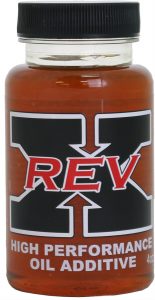Stiction.
It’s kind of a funny word that seems almost made up.
But for many diesel owners stiction is a very real thing and it’s no laughing matter. Stiction — a combination of static and friction — occurs in the injectors of certain engines and causes hard starts, poor idle, and loss of throttle response. Although it’s most common with Ford 6.0L and 7.3L engines, stiction can be a problem on any vehicle that uses HEUI-type injectors. The design of these injectors incorporates oil, which is passed through the injector at a very high PSI to pressurize the fuel. This high pressure and heat pulls in excess oil, which breaks down and creates a gummy residue on the injectors’ internal parts.
This causes the static and friction — stiction.
“Stiction occurs over time when the engine oil breaks down and leaves a gummy residue on the internal parts of your injectors which causes a dragging effect,” said John Filion of Rev-X, a manufacturer of high performance oil and fuel additives. “A more realistic comparison would be if you took a towel and set it on top of some water, then try dragging the towel over the counter you will have drag.”
This drag and friction within the injector hinders its ability to deliver the fuel quickly and precisely, leading to the hard starts, rough idle, and poor throttle response. The problem is exacerbated on cold days when the oil thickens and can lead to longer warm-up times and wasted fuel. Fortunately, there are ways to deal with a stiction problem.
Rev-X, for example, offers a high performance oil additive that’s specially formulated to eliminate stiction. The additive uses a proprietary formula that includes more than 64 active ingredients in each four-ounce bottle, Filion said.
“The main purpose of Rev-X oil additive is a friction reducer,” he said. “When the Rev-X oil is added to your crankcase, it is constantly in motion seeking out hot spots or areas of friction. Because the HEUI system is shooting oil at such a high PSI, it gets hot and the internal parts of the injectors have that gummy residue that has accumulated. Our oil additive seeks out those areas of friction and cleans the gummy residue off the internal parts and then puts a thin coating on the parts to reduce any additional friction from happening. We also have one of the strongest detergent packages to remove the residue.”
Some diesel forums recommend using a lighter weight (thinner) oil to combat a stiction problem. While Rev-X acknowledges this as a temporary fix, Filion said straying from the engine’s recommended motor oil could lead to other problems with the engine. That’s why the Rev-X additive is designed to work in conjunction with any base stock oil.
“To prevent any stiction issues, I would use the recommended amount for your vehicle each time you change your oil,” Filion said. “The cost will be insignificant, especially compared to replacing your injectors for three to four thousand dollars. We’ve seen very little pushback on the price because we have such a good success rate.”
Rev-X’s success was documented in an article in 8-Lug Magazine.
When tested on 10 different Powerstroke engines, the owners of each truck reported a 100-percent reduction in stiction, as well as a smoother running engine and a more-efficient spooling of the turbo. This is because the Rev-X’s additive reduces friction throughout the engine and can be used with any other lubricating fluids — power steering fluid, transmission fluid, and more.
“You will feel our product working, on average, in the first 50 miles,” Filian said. “Our slogan is drive it like you stole it the first 10 miles to get it really heated up and let it work it’s magic.”
To get a better idea of Rev-X’s stiction-eliminating ability, check out these before-and-after videos.


I have a 95 Ford Powerstroke. Am I mistaken that the HPOP system does not use crankcase engine oil but rather has a separate reservoir for the HPOP system? If I am correct, can I use this product in the separate oil system? If so how much of your additive should be used. Thanks
[…] Download Image More @ http://www.onallcylinders.com […]
[…] Download Image More @ http://www.onallcylinders.com […]
It’s not “static and friction”… it’s static friction. Meaning the type of friction between two non-moving objects. Static meaning a lack of motion, not “static” which most people understand as an electrical charge.